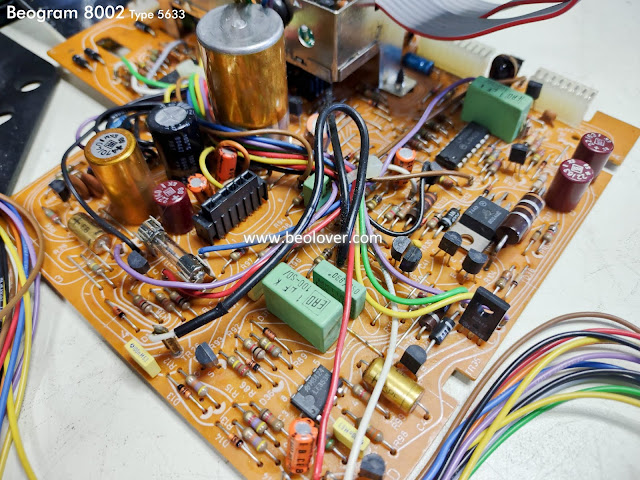As we do with all vintage audio equipment over thirty years old...the original electrolytic capacitors are replaced with new ones. On the Beogram 8002 I like to use high quality Japanese brands like Nichicon and Panasonic for capacitance values greater than 4.7uF and German made WIMA MKS capacitors for capacitance values 4.7uF and smaller. All of the replacement capacitors are rated for 105°C and above.
Starting with the two electrolytic capacitors on the Beogram 8002 chassis (for the +5 VDC regulation) here are the before and after photos.
Before
After
I moved to the transformer box next. There is a non-polarized capacitor in the transformer box that connects to one side of the platter drive. The original capacitor was too large to fit onto the already filled up main circuit board so the B&O engineers placed it in the transformer box.
This capacitor varies by Beogram 8002 Type. For the Type 5633 the value is 27uF, 55V and is non-polarized. I am replacing it with a Nichicon 33uF, 63V, 105°C non-polarized capacitor. The modern capacitor has a much smaller physical size so I mounted it on a 3D printed insert.
The main circuit board was next.
Before
I like to change out the socket for the microcomputer and while the device is removed it makes cleaning up and installing the new C28 capacitor easier.













No comments:
Post a Comment
Comments and suggestions are welcome!